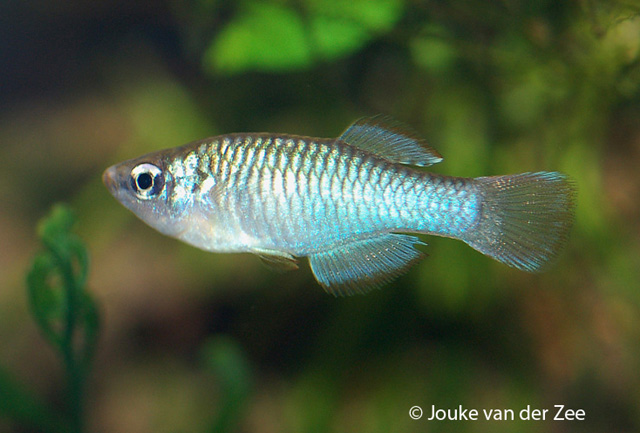| Procatopodidae (African lampeyes), subfamily: Procatopodinae |
| 4.5 cm TL (male/unsexed); 3.5 cm TL (female) |
|
benthopelagic; freshwater; pH range: 6.5 - 7.19999980926514, non-migratory |
| Africa: mountainous forested area of southeastern Guinea and northern Liberia (Ref. 57259); probably also in the adjacent part of western Côte d’Ivoire (Ref. 272, 57259). |
|
Dorsal spines (total): 0-0; Dorsal soft rays (total): 9-13; Anal spines: 0-0; Anal soft rays: 15-19. Diagnosis: Small but very deep-bodied ‘Lampeye’ species with rounded fins; dorsal fin with 9-13 rays, anal fin with 15-19 rays; scales on mid-lateral series 23-24 (Ref. 43268, 57259).
Description: Dorsal fin with 9-13 rays; anal fin with 15-19 rays (Ref. 43268).
Colouration: Male colouration: the general body colour is pale grey-green, the back being grey-brown and the ventral area silver-grey; the scales on the back and the sides have brown edgings; a distinct light blue iridescence is present on the sides, and this is most strongly developed between the eye and the beginning of the dorsal fin; the male has a distinctly deeper body than the female; the unpaired fins are yellow to pale orange or, occasionally, pink, the colour becoming more intense towards the margins; in the posterior parts of the dorsal and anal fins two to three curved, brown bars are present; the caudal fin has a large number of grey-brown spots, arranged in a pattern of crescent-shaped bars (Ref. 57259). Female colouration: translucent grey with a silver abdomen and a light silver iridescence on the frontal part of the sides; scale margins are brown; all unpaired fins are colourless (Ref. 57259). Both sexes have a striking, light silvery-blue iridescent spot in the upper part of the iris (Ref. 57259). |
| Found in small rivers, swamps, and brooks in mountainous areas (Ref. 3788, 57259). Not a seasonal killifish. Is difficult to maintain in aquarium (Ref. 27139). |
|
Vulnerable (VU); Date assessed: 16 November 2019 (B1ab(iii)+2ab(iii)) Ref. (130435)
|
| harmless |
Source and more info: www.fishbase.org. For personal, classroom, and other internal use only. Not for publication.

